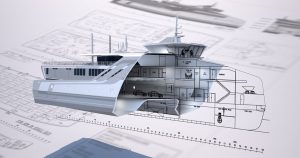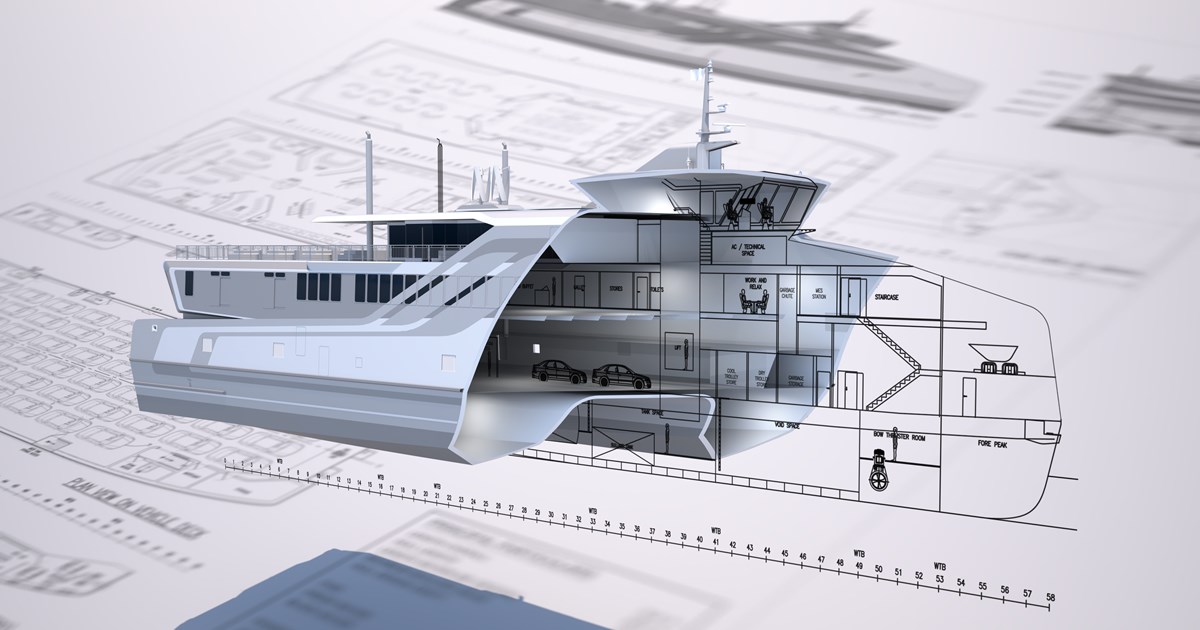Naval architecture, also known as naval engineering, is the practice of designing boats and ships that meet the requirements of prospective owners and operators, as well as perform specific missions. It involves a broad range of engineering fields, such as mechanics, hydrostatics, hydrodynamics, body motion, strength of materials, and structure design. A good naval architect and ship designer must also have knowledge of engineering economics and the properties of construction materials, and be familiar with the latest and best methods of fabricating parts and joining them.
Naval architecture includes the basic and applied research, design, development, design evaluation (classification), and calculations during all stages of the life of a marine vehicle. This involves the preliminary design of the vessel, detailed design, construction, trials, operation and maintenance, launching, and dry-docking. Ship design calculations are also required for ships being modified by means of conversion, rebuilding, modernization, or repair.

The principal elements of naval architecture are hydrostatics, hydrodynamics, flotation and stability, structures, and arrangements. Hydrostatics is concerned with the conditions to which the vessel is subjected while at rest in water and its ability to remain afloat. It involves computing buoyancy, displacement, and other hydrostatic properties such as trim and stability. Hydrodynamics concerns the flow of water around the ship’s hull, bow, and stern, and over bodies such as propeller blades or rudder, or through thruster tunnels. Ship resistance and propulsion are also included in hydrodynamics. Propulsion is used to move the vessel through water using propellers, thrusters, water jets, sails, etc.
Flotation and stability are important aspects of naval architecture. While a body floats on a liquid surface, it encounters the force of gravity pushing down on it. In order to stay afloat and avoid sinking, there is an opposed force acting against the body known as the hydrostatic pressures. The forces acting on the body must be of the same magnitude and the same line of motion to maintain the body at equilibrium. The stability of a ship under most conditions is able to overcome any form of restriction or resistance encountered in rough seas. However, ships have undesirable roll characteristics when the balance of oscillations in roll is two times that of oscillations in heave, causing the ship to capsize.
Structures involve the selection of the material of construction, structural analysis of global and local strength of the vessel, vibration of the structural components, and structural responses of the vessel during motions in seaway. Depending on the type of ship, the structure and design will vary in the material to use as well as how much of it. Some ships are made from glass reinforced plastics, but the vast majority are steel with possibly some aluminum in the superstructure. The complete structure of the ship is designed with panels shaped in a rectangular form consisting of steel plating supported on four edges. Arrangements involve concept design, layout and access, fire protection, allocation of spaces, ergonomics, and capacity.
Construction depends on the material used. When steel or aluminum is used, welding of the plates and profiles after rolling, marking, cutting, and bending as per the structural design drawings or models are involved, followed by erection and launching. Other joining techniques are used for other materials like fiber-reinforced plastic and glass-reinforced plastic. The process of construction is thought-out cautiously while considering all factors like safety, strength of structure, hydrodynamics, and ship arrangement. Each factor considered presents a new option for materials to consider as well as ship orientation.
Some of the key areas of expertise in naval architecture include:
- Hydrodynamics: The study of the behavior of fluids in motion, including the way that water interacts with the hull and propulsion system of a vessel.
- Structural Engineering: The design of the hull, superstructure, and other components of the vessel to withstand the stresses of the marine environment.
- Propulsion Systems: The design of the engines, propellers, and other systems that enable the vessel to move through the water.
- Electrical Systems: The design of the electrical systems that power the vessel, including lighting, communication systems, and navigation equipment.
- Marine Engineering: The design of the mechanical and electrical systems that enable the vessel to function properly, including the steering system, pumps, and ventilation systems.
Naval architecture plays a crucial role in the design, construction, and operation of all types of marine vessels, from small pleasure boats to large commercial ships and naval vessels.

